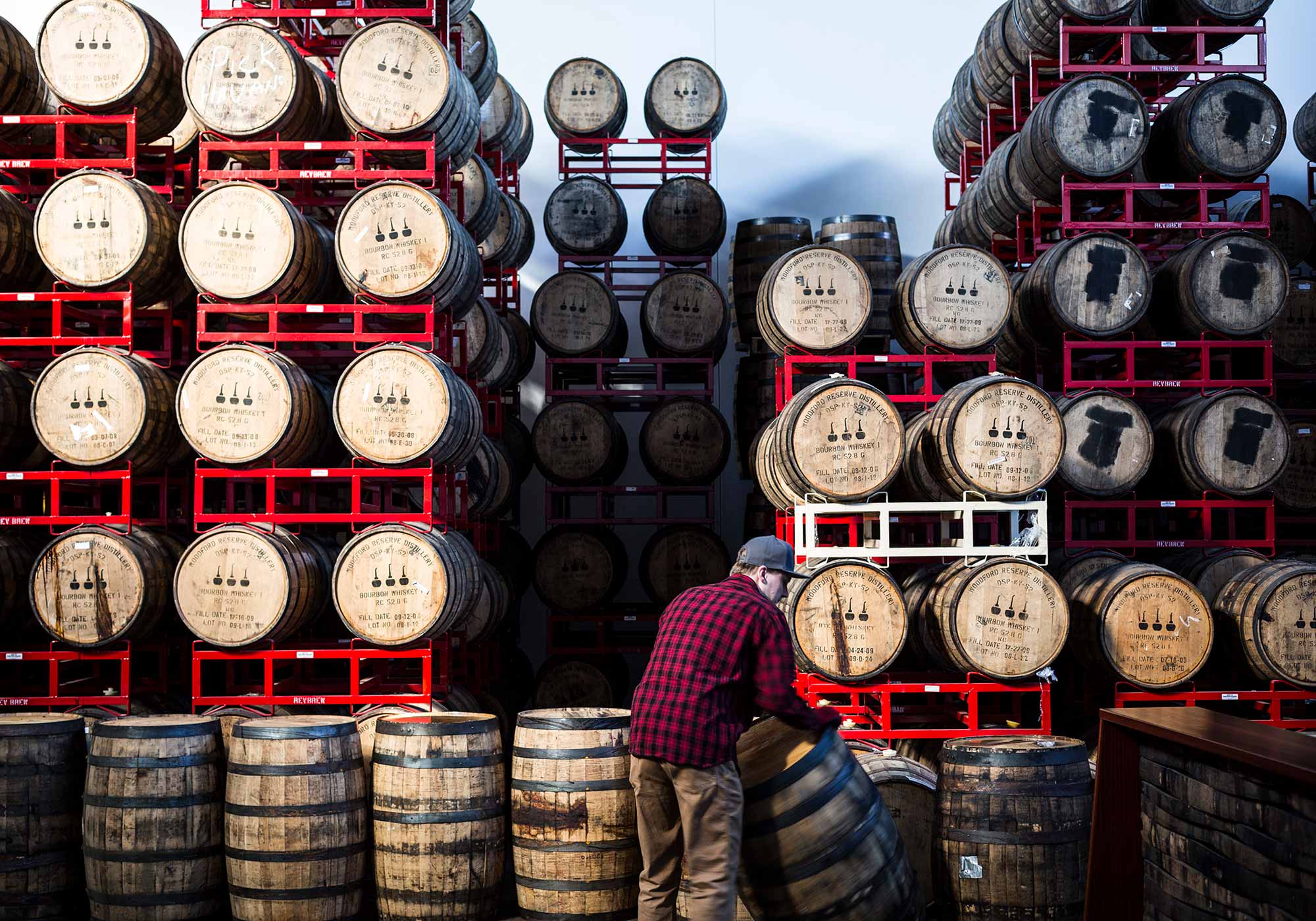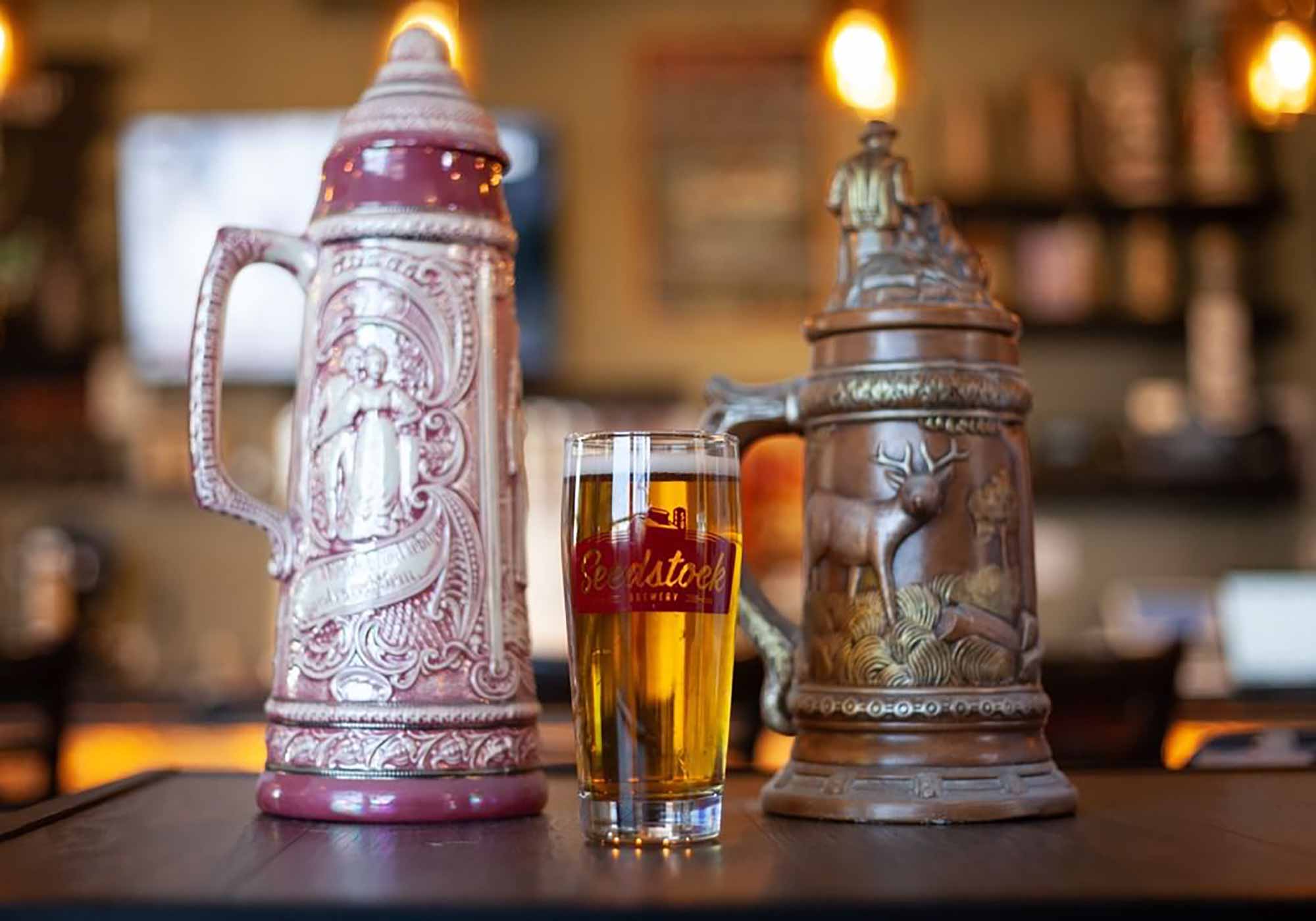Shop
Hop Culture’s Guide to Barrel-Aging Stout, Barleywine, and More
Lock, stock, and...barrel.
Almost thirty years ago in 1992 Chicago-based Goose Island became the first U.S. craft brewery to mass-produce and market their bourbon whiskey barrel-aged beer, Bourbon County Stout. Since then American craft brewers have dived head first into the barrel, finding classic and creative ways to age beer, such as stouts and barleywines, in a variety of wood barrels.
Since we’re celebrating International Stout Day on Thursday, Nov. 4th, 2021, we’re going lock, stock and…barrel into this ubiquitous barrel-aging trend.
We’ll take a look at what types of barrels breweries use to blend stouts, barleywines, and other beer styles, how long they age beer in those barrels, and what flavors these barrels typically impart.
And why this has become one of the most popular trends in American craft beer.
What Is Barrel Aging…And Why It Has Become So Popular Today?
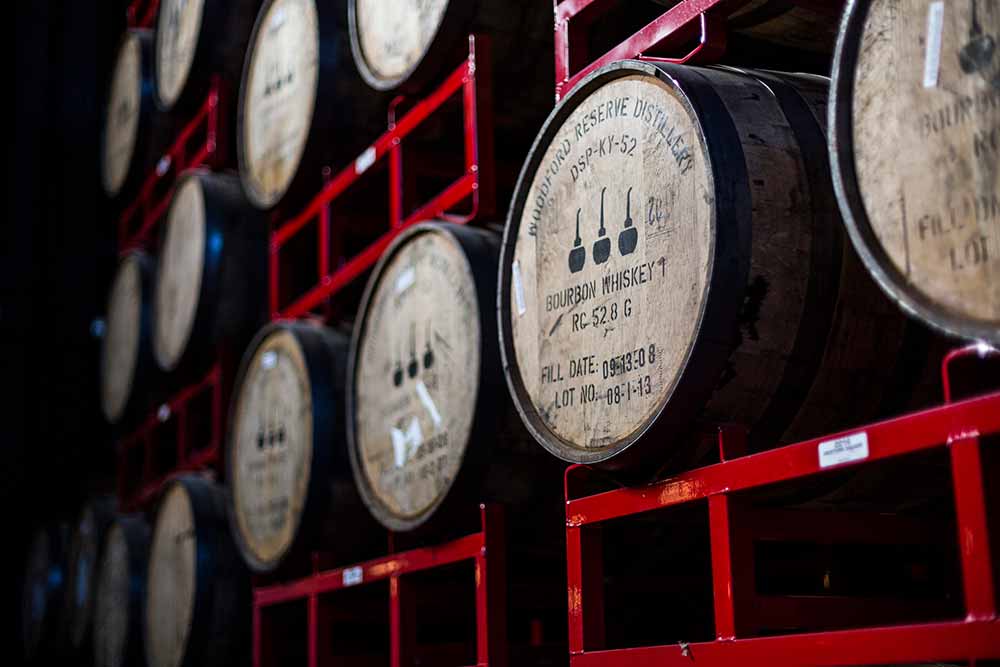
Photography courtesy of Revolution Brewing
Simply put, breweries barrel-age beer to extract compounds from the barrel’s wood fibers and its previous contents over time. These flavors and aromas infuse in the beer, adding an additional layer of complexity.
Whether it’s a barrel-aged barleywine or coconut vanilla Imperial Russian stout, the barrel’s lineage and heritage along with the ingredients and the barrel-aging technique engages beer fans and stimulates demand.
“Barrel-aged beers come with a story and an additional draw based on the type of spirit used,” says Bryce Shaffter, Founder of Cinder Block Brewing in North Kansas City, MO. Cinder Block has produced barrel-aged Black Squirrel Russian Imperial Stout since 2013.
For breweries, the appeal of making barrel-aged beer taps into, “traditions in wood and beer that we all like to draw on,” says Shaffter.
According to Cory Johnston, Founder of Fields & Ivy Brewery in Lawrence, KS, “Some oak trees used for the production of barrels have been growing for up to 200 years!”
Barrel-aging beers lends them a unique history from the tree to the barrel to the beer. Today, brewers considered barrel-aging a beer almost like a rite of passage.
“It is almost like a merit badge to have brewed at least one beer aged in barrels,” says Shaffter.
Which also means these beers can be pretty limited. But that exclusivity can actually drive the popularity of barrel-aged beers. “Since it takes time to create these beers and they are [often] limited in quantity, scarcity also plays into this,” says Shaffter.
All in all, breweries have ample motivation to barrel-age beer.
American Oak Barrels Are The Standard For Good Reasons
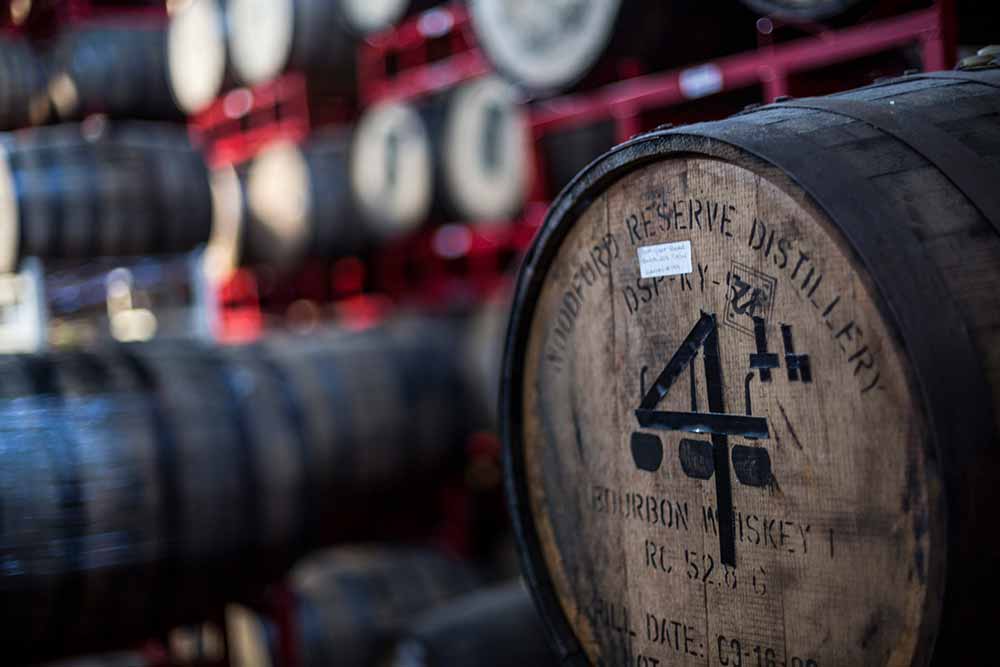
Photography courtesy of Revolution Brewing
When barrel-aging brewers primarily use barrels made of American white oak. French oak wine barrels are another option, but brewers use these vessels less often, partially because they are more expensive and less readily available.
Why does American white oak reign?
Coopers have used American white oak to produce barrels for centuries. White oak is strong, pliable, naturally watertight, and abundant in the Upper and Lower Midwest and Mid-Atlantic states.
As far as aging beer, white oak doesn’t exude off-flavors or aromas compared to pine and red oak.
Even better, the wood’s lactones produce aromas ranging from oakiness to coconut. Lignin in oak contains vanillin, the primary aroma compound in natural vanilla. Another phenolic compound, guiacaol, results in sweet spice and cinnamon notes while eugenol conveys hints of clove.
Moreover, when a cooperage toasts white oak to varying degrees, those compounds produce an additional range of strong and sweet flavors and aromas.
Alcohol extracts all these compounds from the barrel’s wood fibers. So it’s no coincidence that brewers develop stouts and other flavor-forward styles to complement the naturally-present compounds in American white oak barrels.
Breweries Prefer Used Spirits Barrels…With A Few Conditions
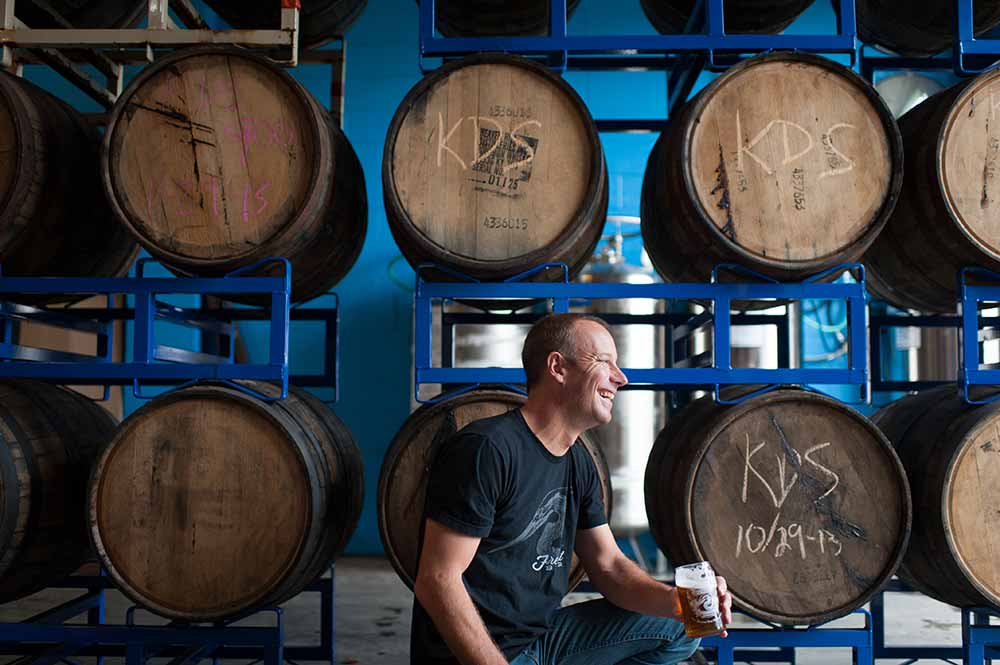
Whatever type of barrel a brewer uses to age beer one thing remains the same: used spirits barrels are best for a variety of reasons.
Firstly, new oak barrels are expensive.
Secondly, the raw oakiness of a fresh barrel can ruin a beer’s balance or necessitate extensive blending. Used spirits barrels have less residual tannin, the bitter, astringent compound present in oak.
“Older barrels generally have a more wholly integrated flavor profile and less profound tannic contribution from American white oak,” says Matt Lincecum, Co-Founder and Brewer at Fremont Brewing in Seattle, WA.
The barrel should still have some “life” left. Excessive prior usage diminishes the oakiness, and a spent or neutral barrel has no character to impart.
A spirits barrel is often used by one or several distilleries for many years before a brewery acquires it. When ordering barrels through a wholesale broker, breweries naturally want the barrel in good condition. The barrel’s rings and staves need to maintain structural integrity to allow the beer to age over a long period without spoilage or leakage.
In short, a brewery can focus on brewing, aging, and blending beer in a used spirits barrel and doesn’t have to manage time and resources on a new oak barrel.
Brewers Also Prefer ‘Wet’ Barrels for Barrel-Aging
A barrel’s wetness or dryness is relevant to the time amassed since one emptied the barrel. Breweries prefer freshly-emptied “wet” barrels that retain much of the spirit’s character.
Fremont Brewing uses bourbon barrels between seven- to fifteen-years-old that are freshly-emptied no more than two weeks out. “Barrels that have not dried out will have that level of saturation in the wood that helps give the beer-aging process another layer of complexity,” says Lincecum.
Additionally, the spirit’s residual high-proof alcohol soaked into the barrel minimizes the likelihood of Brettanomyces or other microbial issues developing and infecting beer or cellar operations.
Similarly, Revolution Brewing in Chicago, IL, utilizes freshly-emptied barrels. “The barrel has already told most of its story to the whiskey,” says Marty Scott, Barrel Program Lead at Revolution Brewing. “Whiskey left in the staves contributes considerable American oak character from its own barrel extraction. The wetter the barrel, the more ‘barrel’ we’ll recover via the whiskey.”
With over 1,500 barrels in its program, Revolution has plenty to choose from based on the project. “Most of our beers are built to be heavy-hitters, bold and flavorful. We use the barrel most appropriate for these beers,” says Scott.
What Types Of Spirits Barrels Do Breweries Use?
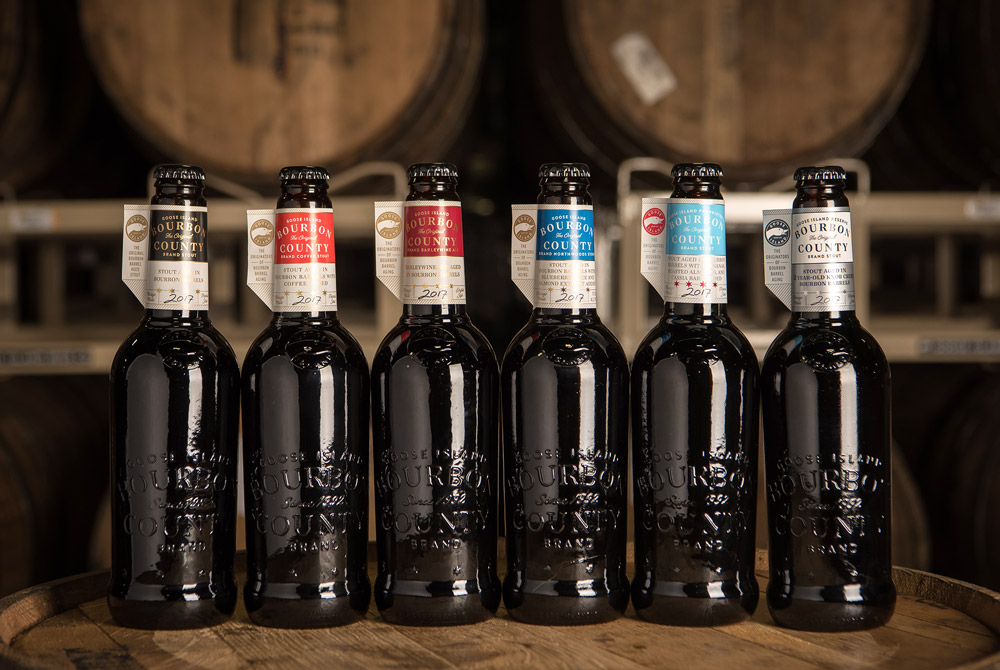
Photography courtesy of Goose Island Beer Company
Different types of spirits barrels contribute certain flavor and aroma profiles to beer. Let’s examine these types and what makes them preferable for barrel-aging.
Bourbon Whiskey Barrels
By far, bourbon whiskey barrels remain the most commonly-used barrels in the business. After all, Goose Island revolutionized craft brewing by aging its Bourbon County Stout in bourbon barrels.
Brewers initially favored Kentucky bourbon barrels because of their inexpensive cost and easy accessibility. By law U.S. distilleries must use new American white oak barrels to age straight bourbon whiskey for a minimum of two years. Meaning many distilleries have a surplus of barrels used only once.
Additionally, brewers like the character of the oak and spirits that soaks into the wood. Whiskey barrels typically present a range of vanilla, coconut, cherry, spice, and oak flavors. That’s a solid match for aging an Imperial stout or strong ale.
“If you choose the right bourbon barrels and develop a beer that seeks to both complement and enhance the barrel character, you can feature the tannic nature of American white oak alongside the raw spirit of the bourbon – rich vanilla, maple syrup and fresh toasted almond aromas and flavors,” says Lincecum.
In its barrel-aging program Fremont uses 1,800 mostly bourbon whiskey barrels with medium toast and heavy char. For instance, the brewery ages its popular B-Bomb Imperial Winter Ale series and Dark Star Imperial Oatmeal Stout series in bourbon barrels. The barrels have “a thick layer of ashy bourbon goodness swirling around in them,” says Lincecum. “Bourbon is the king and queen of spirits rolled into one.”
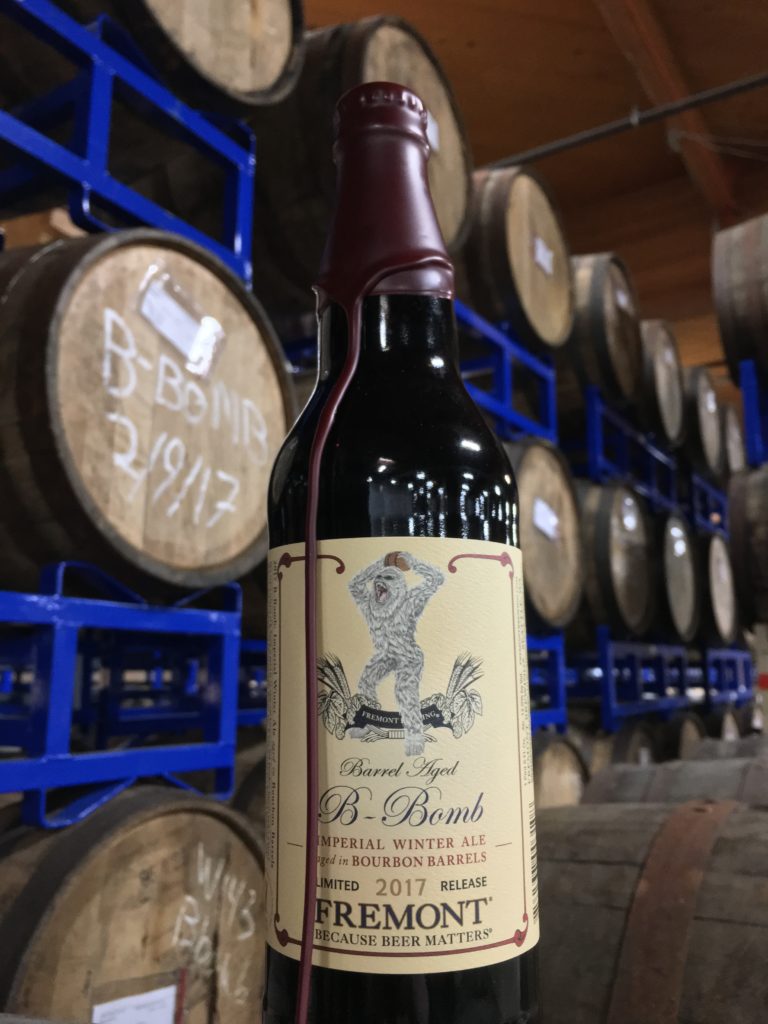
Photography courtesy of Fremont Brewing
Similarly, Revolution Brewing’s Deep Wood Series features Imperial stout, barleywine, and even rye ale aged in bourbon whiskey barrels.
Rye Whiskey Barrels
Rye whiskey tends to have a peppery, spicy tone compared to bourbon whiskey’s sweetness and full body. In the case of a beer aged in a wet rye barrel that contained a, “mash-expressive whiskey, we should experience a more forceful spiciness and subdued sweetness as the blend tilts further in favor of those examples,” says Scott.
Revolution uses both rye whiskey and bourbon whiskey barrels to age beers like V.S.O.R. Rye Ale and Ryeway to Heaven Ryewine. Both beers contain more than 60-percent rye in the grain bill. “Primarily our use of rye whiskey barrels is intended to broaden the spirit profile of traditionally bourbon-heavy barrel selections,” says Scott. “Should it complement or enhance rye-laden mash bills, all the better.”
Rum Barrels
These barrels bear similarities to bourbon whiskey barrels, especially if previously used to age bourbon before rum. If charred inside, the rum barrel provides vanilla and toffee-like notes and some tannins. “What’s unique to rum barrels themselves is really the rum aspect which does tend to add a bit more of that molasses, burnt sugar cookie-type flavor to the beer,” says Jason Perkins, Brewmaster at Allagash Brewing Company in Portland, ME.
Allagash produces Neddles, a sour brown ale aged in rum barrels. The barrels come from New England Distilling owned by Ned Wight, a former employee of Allagash Brewing. “In Neddles, the rum barrels bring out a pleasant caramel, almost molasses-y flavor in the beer, on top of the beer’s existing acidic notes like sour apple and stone fruit,” says Perkins.
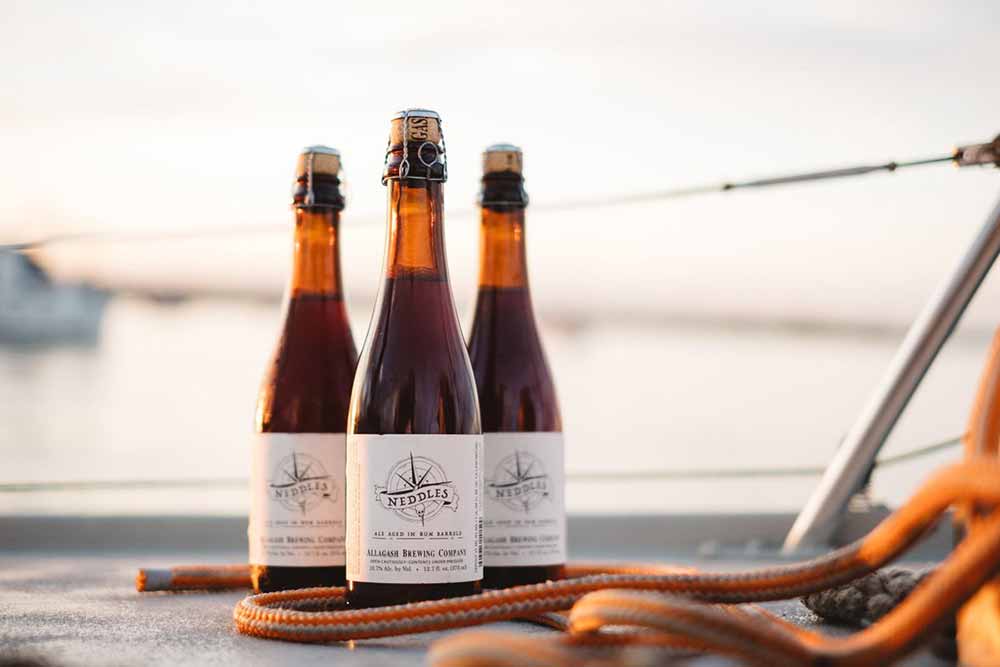
Photography courtesy of Allagash Brewing Company
Cognac Barrels
Fields & Ivy Brewery has used cognac barrels to age different beers. Cognac, a type of brandy, requires at least a two-year aging in French oak barrels. Moreover, the wood for these barrels comes from wood managed in French oak forests that can be 125-200 years-old.
“From the cognac, you’re getting grapey and boozy aromas and flavors,” says Johnston. “The oak barrel contributes varying amounts of vanilla, coconut, clove, spice, smoke, and caramel.”
Fields & Ivy’s Paean Barleywine is “relatively less malty and hoppy than an Imperial stout, allowing the complexity of the cognac and oak to come through,” says Johnston. Initially released in 2020, the remaining kegs will be re-released in the near future.
And for Tsar Napoleon releasing in bottles by December this year Field & Ivy also used cognac barrels. This beer sat for several months on Madagascar vanilla pods to create a big, boozy Russian Imperial stout. According to Johnston for this one the cognac character has mostly dissipated and oakiness comes to the forefront.
How Long Is Beer Barrel-aged?
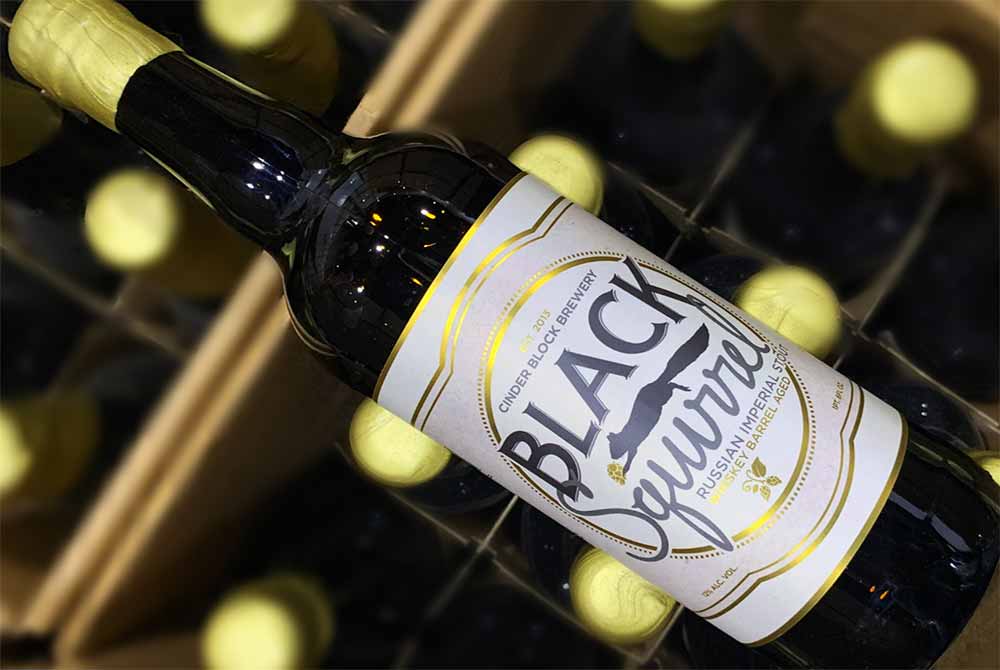
Photography courtesy of Cinder Block Brewery
The aging process varies based on the brewery and its goals for a specific beer. Fremont Brewing ages beer for at least twelve months and up to three years.
Fields & Ivy ages its barleywine in freshly-emptied cognac barrels for a few months and re-uses the barrels to age its Russian imperial stout for several months.
Meanwhile at Revolution, “Barrels can be aged up to five years in special cases, but one to two years is the norm for a minimum of tannin and compound extraction,” says Scott.
Aging time also depends on the style. For instance, Revolution’s Working Man English Dark Mild might be barrel-aged only one to two weeks in a spent barrel. Whereas a stout with dark malt and coloration will likely age much longer. “Stouts containing dark malts are naturally more antioxidant than paler varieties, such as barleywine. For this reason, they will age differently over time,” says Scott.
Blending Further Develops Barrel-Aged Stouts and Barleywines
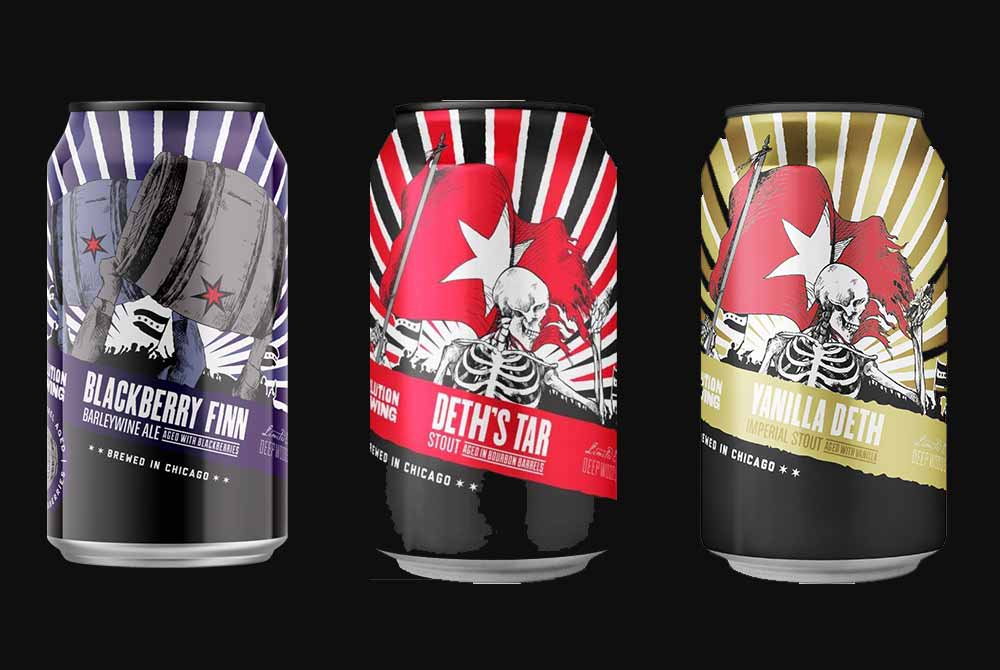
Taking things a step further, breweries can blend different barrel-aged beers together to get a fantastic finished beer.
Fremont blends vintages of every barrel-aged beer to develop greater depth of character. Once the beer is introduced to the barrel, the beer is sampled every six months. “We run it through sensory and lab tests so we can track its development,” says Lincecum.
A beer ready for blending has been objectively classified and grouped. “It still comes down to us sitting around a table with barrel samples, blending with graduated pipettes, and sharing our thoughts,” says Lincecum. “The ultimate blend for every beer is a combination of our collective passion, vision, and experience.”
Prior to blending, Revolution considers barrel storage conditions that affect oxidation, evaporation, and concentration during the aging process. These factors impact the composition of each variant or vintage of aged beer. The brewery evaluates those factors before deciding how to best blend different barrel-aged beers for the final version.
Knowing these factors happen during aging, Revolution brews both a sweet and dry version of its barrel-aged beers. Each version is stored in separate barrels and aged with different goals before blending.
The dry version typically ages for several years in a young oak barrel. That reduces water and alcohol content and concentrates oakiness and the beer’s flavors and aromas. The dry beer’s lower sugar level stabilizes it, making it less prone to secondary fermentation.
However, as Scott says, “It’s no fun to drink oak juice.”
So blending the dry version with the sweet version, and possibly adding fruit, makes the beer more palatable. For instance, Revolution adds unfermented blackberries to Blackberry Finn, its blended double bourbon barrel-aged dry English Barleywine.
What Are Some Barrel-Aged Stouts and Barleywines I Can Try?
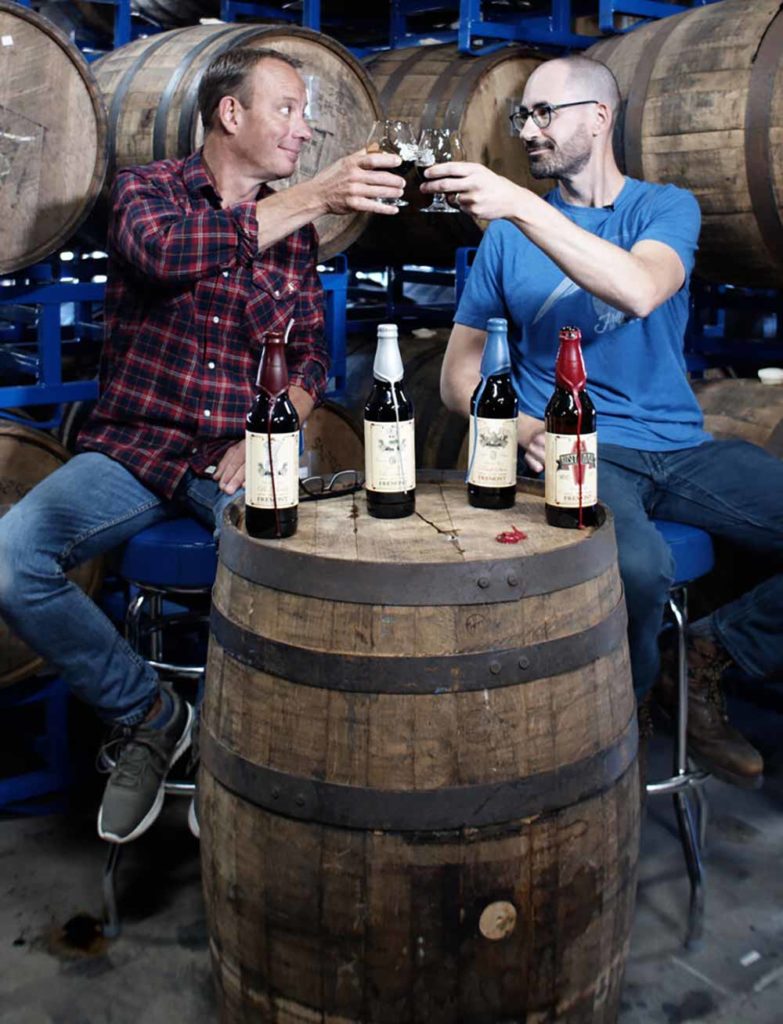
Photography courtesy of Fremont Brewing
Bourbon Barrel-Aged Dark Star (BBADS)
Fremont Brewing – Seattle, WA
Fremont starts with seven- to twelve-year-old Kentucky bourbon barrels. Dark Star is aged in separate batches for eight-, twelve-, eighteen-, and twenty-four-months, then blended to produce an imperial oat stout with lush roasted and chocolate malts atop bourbon barrel-aged warmth. The limited edition of 2021 BBADS: Coffee Cacao Vanilla releases around Oct. 1st each year.
B-Bomb Bourbon Barrel-aged Imperial Winter Ale (formerly Bourbon Abominable)
Fremont Brewing – Seattle, WA
B-Bomb rests in eight- to twelve-year-old American oak bourbon barrels. The Imperial winter ale blends variations aged nine, twelve, and twenty-four months. Prepare yourself for bourbon, oak, cacao, leather, toffee, and dark coffee notes from the barrel-aging and blending process. Aromas include toffee, chocolate, vanilla, and dark sugar aromas, with notes of whiskey, wood, dried fruit, coffee, and warming spices. 2021’s Cinnamon Coconut B-Bomb releases on Nov. 24th, 2021.
Vanilla Deth Barrel-aged Imperial Oatmeal Stout
Revolution Brewing – Chicago, IL
This selection from Revolution’s Deep Wood series is brewed with English specialty malts. Flaked and malted oats help to develop Deth’s Tar’s chocolaty profile and silky mouthfeel. American oak barrel-aging for one year contributes layers of complexity with ample vanilla, toasted coconut, and caramel. Revolution barrel program lead Marty Scott says the brewery, “reached for that Goldilocks level of vanilla and vanilla oak-aged stout.” Revolution, “purpose-blended, using lots of different disciplines” to achieve a “ton of vanilla bean and French oak vanilla character,” says Scott. The brewery released this beer in October 2021.
Blackberry Finn Barleywine Ale
Revolution Brewing – Chicago, IL
Revolution blended double bourbon barrel-aged dry English Barleywine with unfermented blackberries to develop depth. Nuanced malt sweetness, oaky tannin, and vanilla from American oak complements sweet-tart blackberry for a bold yet playful cool weather sipper. This beer should be available in November.
Black Squirrel Russian Imperial Stout
Cinder Block Brewery – Kansas City, MO
Named after an uncommon black squirrel that mysteriously appeared while Cinder Block developed its Russian Imperial Stout. Each vintage is aged in a whiskey barrel for nine months. The whiskey barrel is sourced from a different distillery each year. Flavors unfurl with notes of creamy vanilla, toasted coconut, oak, whiskey, and dark chocolate. Released on Black Friday in November each year.

